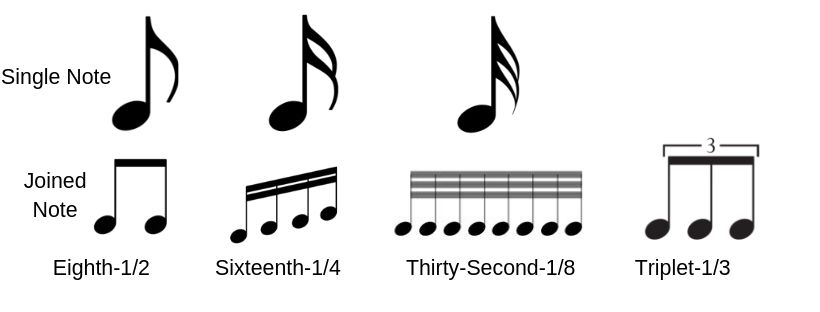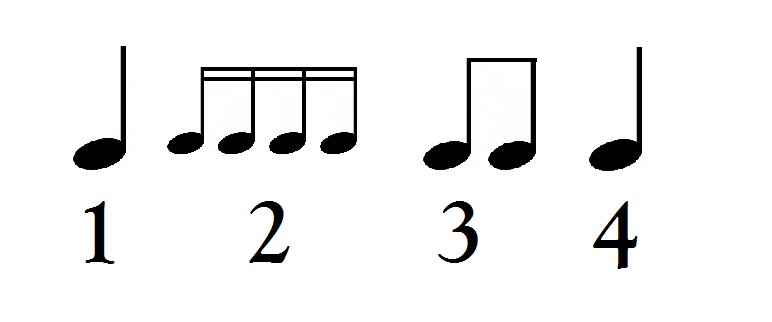
In the same way, a dotted quarter note is the same length as three eighth notes tied together. For example, a dotted eighth adds an additional sixteenth note to the eighth note so that it is now 50% longer than it was without the dot. Once again, you can apply this to all durational symbols. If that didn’t make sense, don’t worry about it that was only an explanation for the skeptical reader just keep reading.) Example 1-10 shows what example 1-9 looks like when a dot is (As a general rule, notes are tied in such a way as to cause note heads to occur on important pulses while dots are used to show the reader that there is nothing important happening within that duration.

You will often see combinations of dots and ties in order to clearly notate a variety of rhythms. For this reason, we can use a dot to add half of the original value to a note. However, this method becomes impractical and confusing when three-beat durations are used throughout an entire musical work (as it often is). One clap is at the same time as the tap while the other is as far away from the tap before and after it as possible. This does not mean you may clap in two arbitrary places between taps. You are now tapping quarter notes while clapping eighth notes. Now for every time you tap your foot, clap twice and make the claps evenly spaced until a second steady pace is formed with your clapping. Let’s use a real example: tap out a moderate and steady pace (tempo) with your foot. If a second eighth note occurs in succession of the first, the second eighth note begins exactly halfway through the quarter note. In other words, an eighth note represents an event that is half the length of a quarter note.
SIXTEENTH NOTES AND THIRTY SECOND NOTES FULL
Don’t make this any more complicated: two eighth notes in succession simply means that in the time it takes to play a full quarter note, two musical events should occur. Just like in mathematics, half of a quarter is an eighth and two eighths equals a quarter.

To do this we have to start somewhere, so we’ll start with the quarter note. Right now our goal is to learn what the rhythmic symbols mean only in the context of one another. At the moment we’re not concerned about how quickly or how slowly rhythm occurs this answer is given to you on most musical documents. Pitch is determined by notehead placement and accidentals while rhythm is determined by filled and unfilled noteheads, stems coming out of the noteheads, and flags (or beams) coming out of the stems.Īll rhythmic symbols’ lengths are relative to one another. It’s not enough for music notation to tell us which notes to play, but it must also indicate when to play them and for how long. Music is an art that requires time in which to exist.


 0 kommentar(er)
0 kommentar(er)
